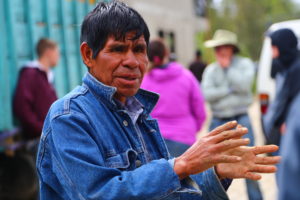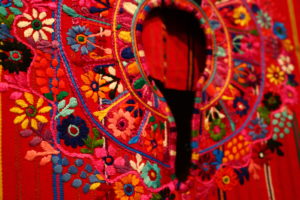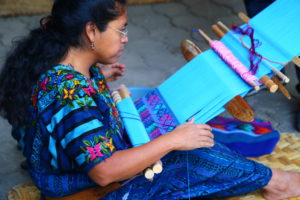The ten days I recently spent in Guatemala have given me a deeper appreciation for the role of “family” in the Maya culture. The first observation I made while in-country were the holding of hands among the indigenous populations. When one thinks of holding hands, it often serves as reference between a woman and a man. However, I interpreted this symbolism in Guatemala as a representation of their value for each member of the family. This is a country in which half of its population lives in poverty, and the agriculture sector employs half of all Guatemalans. So the role of each family member, whether male or female, is necessary for survival of the entire household.
For example, women are expected to maintain their domestic responsibilities, whereas men are expected to work out in the fields. These culturally appropriate, gender roles became apparent during our visits to indigenous villages such as Zaculeu and Jaibalito; in the Panajachel region of Guatemala. Although these indigenous men and women continuously face hardships, they still maintain their value for each other and demonstrate pride in both their work and cultural beliefs.
While working on soil conservation projects with a pea-farmer’s cooperative in Zaculeu, I found it enlightening that the farmers were genuinely fulfilled with the minimal acreage they owned.
The first remark that struck me was when Don Eńildo, leading member of the pea-cooperative, stated in Spanish, “Si estás en contra de la tierra, entonces usted está en contra de Dios.”
When translated to English the statement reads, “If you are against the land, then you are against God.”
As a member of the Kaqchikel Maya Tribe, Don Eńildo exemplified his cultural beliefs in both maintaining and respecting the land provided to him and the cooperative members. And it is through this value system that both the land and farmers whom are beneficiaries will continue to progress.
Another observation I made while in-country were Maya women’s role as preservers of culture. Not only were these indigenous women expected to fulfill their role in the family, but they were also expected to maintain their cultural identity dependent on their Maya Tribe. While visiting the artisan market in Jaibalito, it became apparent these indigenous women took pride in their craftsmanship, and even more in telling the story of their tribe through the textiles. I couldn’t tell you if I enjoyed more looking at these colorful huipil designs, or speaking with the indigenous women who shared their stories with me. When I would explain that I am of Mexican descent, nearly every woman I spoke with would express how important it is for me to know my native language.
A member of the K’iche Maya Tribe, Dońa Catalina, explained to me that although her people endured genocide during the 36 year Civil War in Guatemala; the government of the country was unable to eradicate the 21 recognized Mayan languages of this largely indigenous population.
She stated in Spanish, “Los guerrilleros pueden haber tomado nuestra tierra y sus seres queridos, pero eran incapaces de tomar nuestra identidad y el lenguaje. Es a través de nuestra fe que hemos surgido de tales injustice, y es a través de nuestra lengua y cultura que vamos a seguir compartiendo nuestras historias.”
When translated to English the statement reads, “The guerrillas may have taken our land and loved ones, but they were unable to take our identity and language. It is through our faith that we have arisen from such injustice, and it is through our language and culture that we will continue to share our stories.”
In retrospect, I have gained further understanding of gender roles inclined by the Maya culture, and how both men and women serve as integral parts in the development of this indigenous value system. Given my Mexican heritage is a remnant of an indigenous population, I have a newfound respect for the preservation of culture among the Mayans. I empathize with both Don Eńildo and Dońa Catalina, and agree that their cultural beliefs will enable their Maya Tribes to flourish. My only hope is that I can return to Guatemala in my future career as a Foreign Service Officer and learn new stories from these dedicated, Mayan story-tellers.










